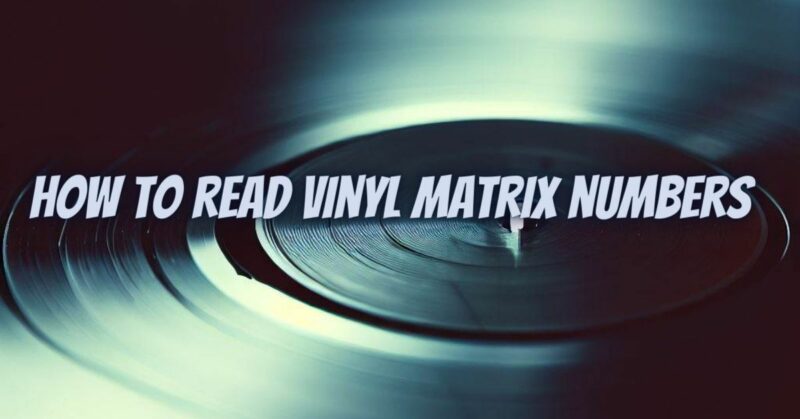Matrix numbers are a series of letters and numbers etched into the dead wax, or runout groove, of a vinyl record. They are used by record collectors to identify different pressings of a record, and to determine the record’s country of origin and release date.
To read matrix numbers, you will need a flashlight or other bright light source. Hold the record up to the light and look for the etched numbers and letters in the runout groove. The matrix numbers will typically be located on the A-side and B-side of the record, and may be different on each side.
Matrix numbers can be broken down into the following parts:
- Catalog number: This is the unique identifier for the record release. It is usually the most prominent number on the matrix number.
- Side identifier: This indicates which side of the record you are looking at (A or B).
- Pressing plant identifier: This is a code that identifies the record pressing plant. It is not always present, but if it is, it is usually located at the beginning of the matrix number.
- Stamper number: This is a unique number that identifies the stamper used to press the record. It is also not always present, but if it is, it is usually located at the end of the matrix number.
- Cut number: This is a number that indicates the number of times the record has been recut. It is also not always present, but if it is, it is usually located in the middle of the matrix number.
For example, here is a matrix number:
X-12345-A-1-1
In this example, the catalog number is X-12345, the side identifier is A, the pressing plant identifier is omitted, the stamper number is 1, and the cut number is 1.
Matrix numbers can be used to identify different pressings of a record. For example, if you find two records with the same catalog number but different matrix numbers, then you know that they are different pressings.
Matrix numbers can also be used to determine the record’s country of origin and release date. There are a number of websites and databases that list matrix numbers and their corresponding information. For example, the Discogs website has a comprehensive database of matrix numbers.
Here are some specific examples of how to use matrix numbers:
- If you are looking for a first pressing of a record, you can search for matrix numbers that correspond to early pressing plant identifiers. For example, the pressing plant identifier RL is associated with the first pressings of many Atlantic Records albums from the 1960s and 1970s.
- If you are trying to determine the country of origin of a record, you can search for matrix numbers that correspond to pressing plant identifiers in that country. For example, the pressing plant identifier TML is associated with pressings of Canadian records from the 1960s and 1970s.
- If you are trying to determine the release date of a record, you can search for matrix numbers that correspond to pressing plant identifiers that were used during that time period. For example, the pressing plant identifier MASTERDISK was used for pressings of many American records from the 1970s and 1980s.
Matrix numbers are a valuable tool for record collectors. By learning how to read and understand matrix numbers, you can learn more about your record collection and identify valuable pressings of your favorite records.


